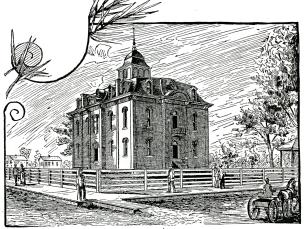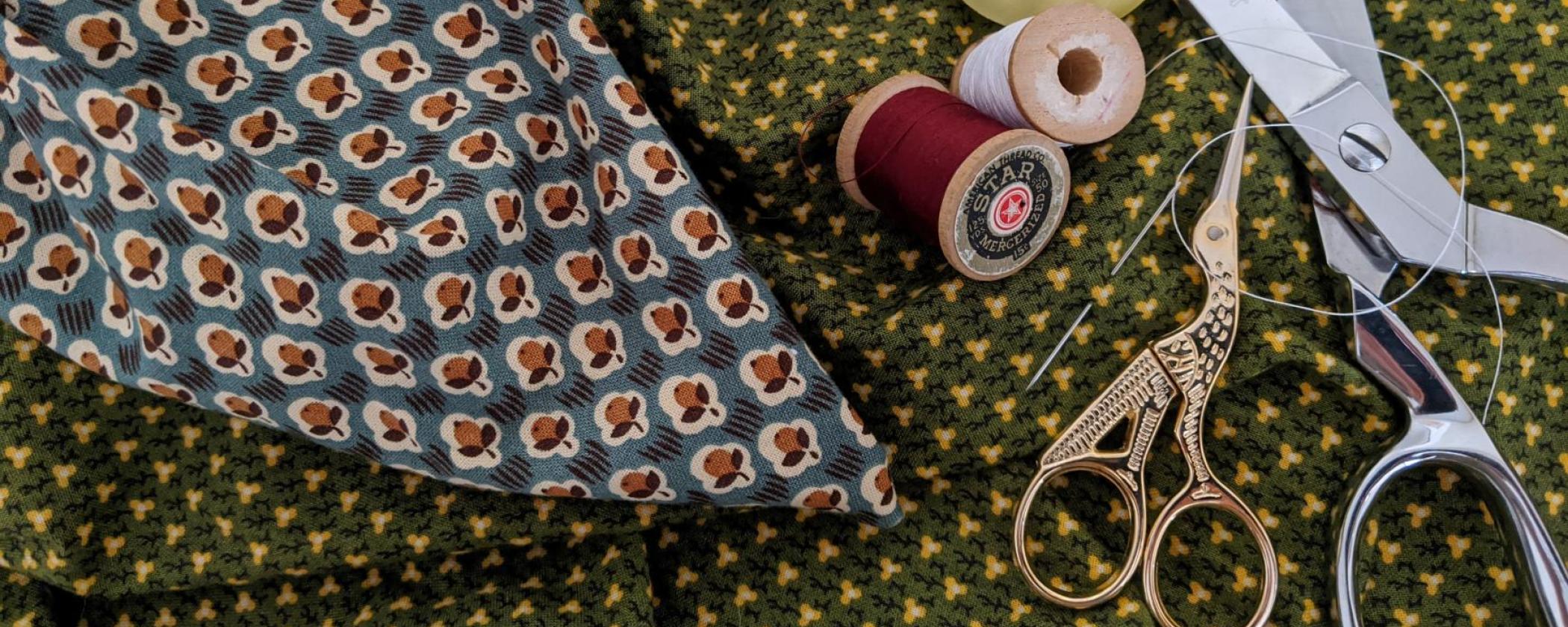
Make Do & Mend
By: Bonnie MarberryPart of the mission of Jacksonport State Park in northeast Arkansas is to preserve and educate about the history of our town. Though no battles were ever fought here, Jacksonport was deeply impacted by the American Civil War of the 1860s: As a town built on trade, Jacksonport suffered thanks to the blockading of the White and Black Rivers here, the highways of the time.
With no way to bring in fabric from the trade centers on the Mississippi River, the housewives of Jacksonport had to be creative in their efforts not only to keep up with fashions but to keep their families clothed at all. Even amid crisis, the women of Civil War-era Jacksonport wanted to look their best, just like people today.
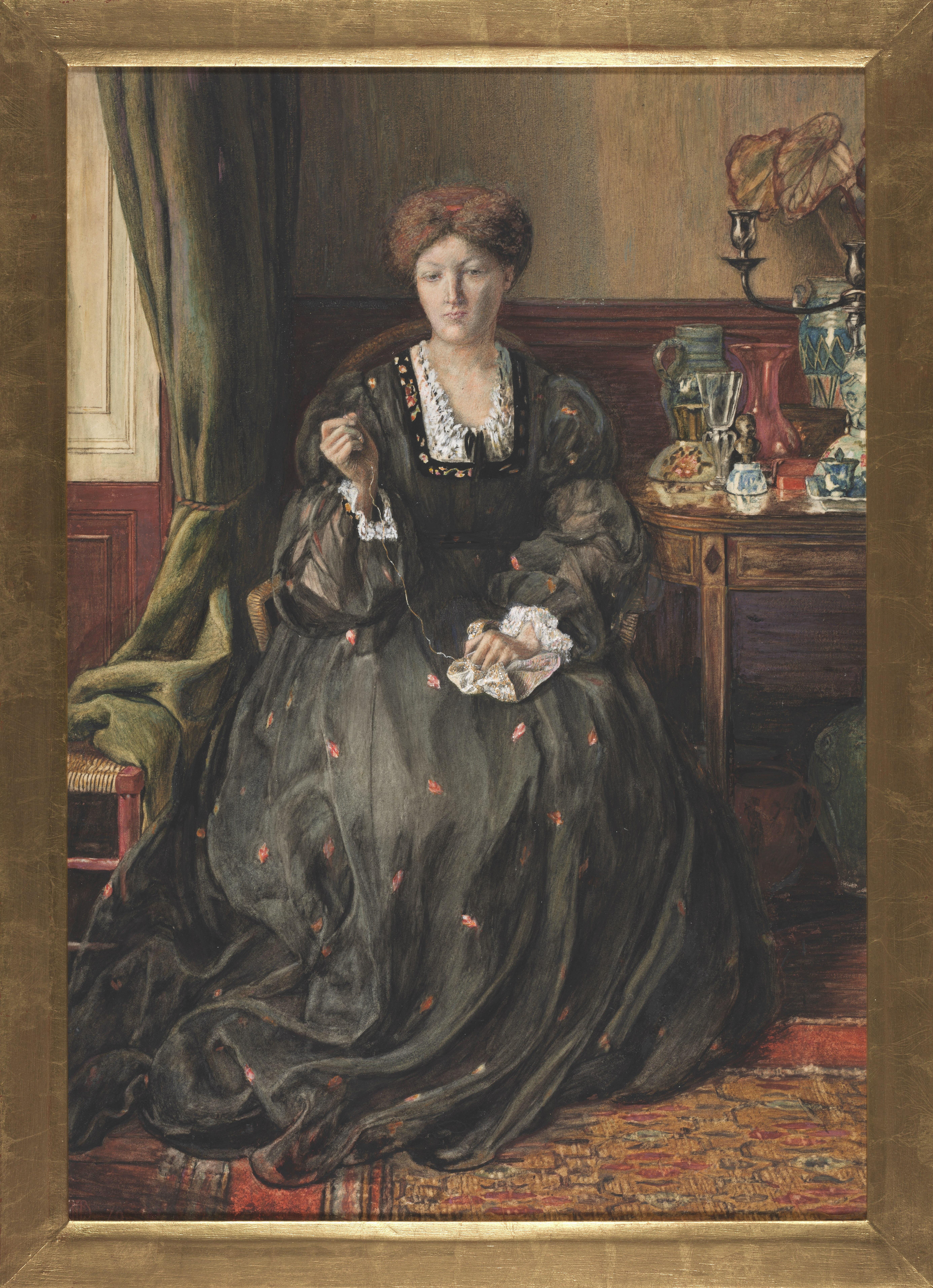
One common way for ladies to keep themselves in style was to mend the clothes they already had. Replacing buttons, patching holes, and darning socks was a necessity and a matter of course in a time before department stores and fast fashion. Every household had a “rag bag” to search for matching fabric scraps for patching, and stockings were frequently knitted at home, allowing for darns to perfectly match the original yarn. Image: Portrait of Emma Madox Brown by Catherine Madox Brown, ca. 1870, Wikimedia Commons
Rounded “eggs” of wood, ceramic, or glass were used to stretch out the heel or toe of a sock while the seamstress did her work, ensuring that the darn would take the right shape when she was done. Image: Jacksonport State Park Collection
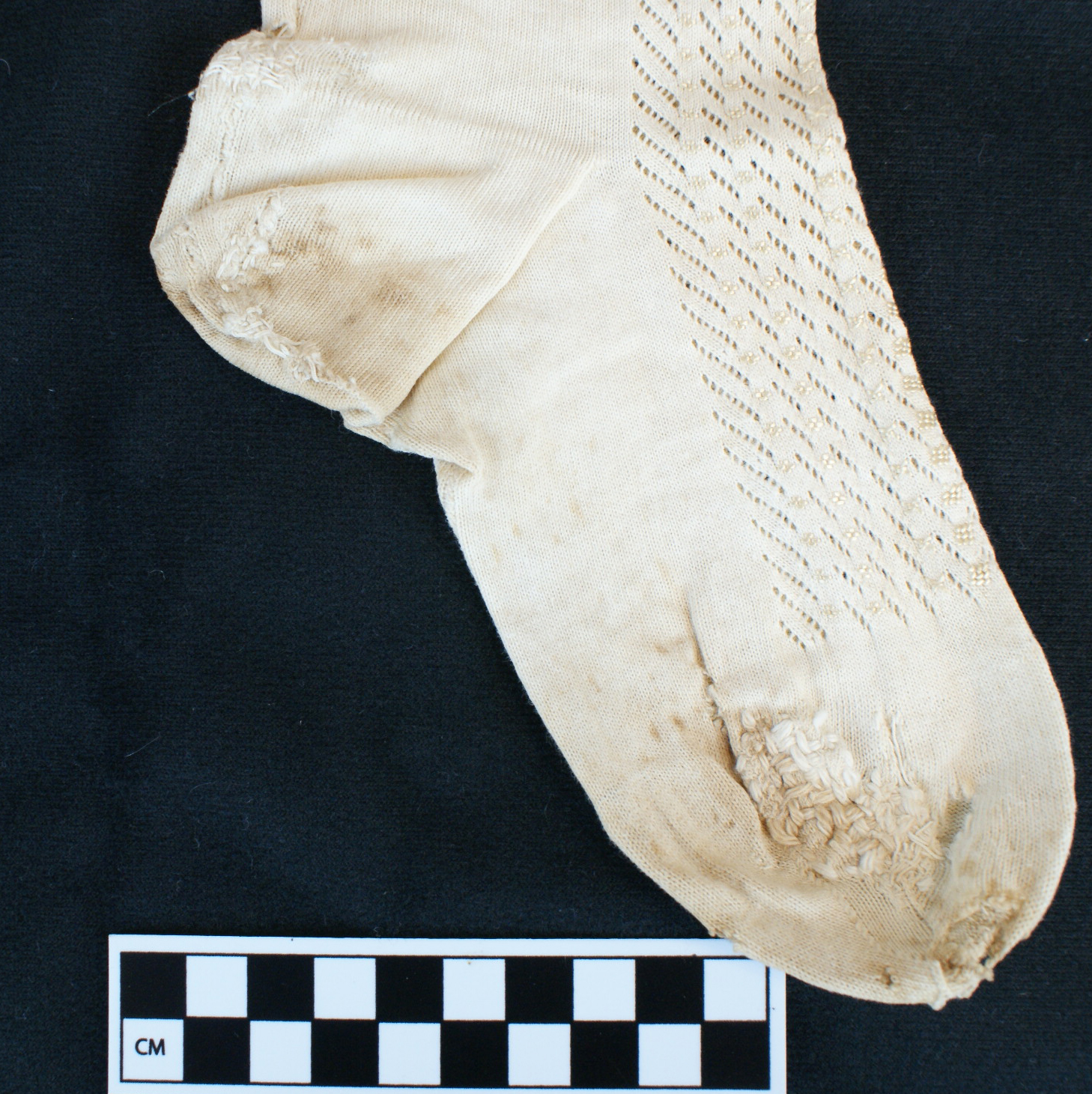
Notice the different texture on the heel and toe where the stockings were mended.
This sleeve sports several mends and has clearly been well-worn. Image: Jacksonport State Park Collection

This image shows a dress from the 1860s. With mending, a dress could stay in good shape for years, but the style of the gown might not be as popular as it was when it was made. The ladies of historic Jacksonport had an answer for that as well. Thanks to the ample amount of fabric needed to create such a gown, they could be altered and cut into new, up-to-date styles. Any scrap fabric could be used to re-trim a bonnet or hat, and a lady could have a fresh “new” ensemble without spending a penny. Image: Jacksonport State Park Collection
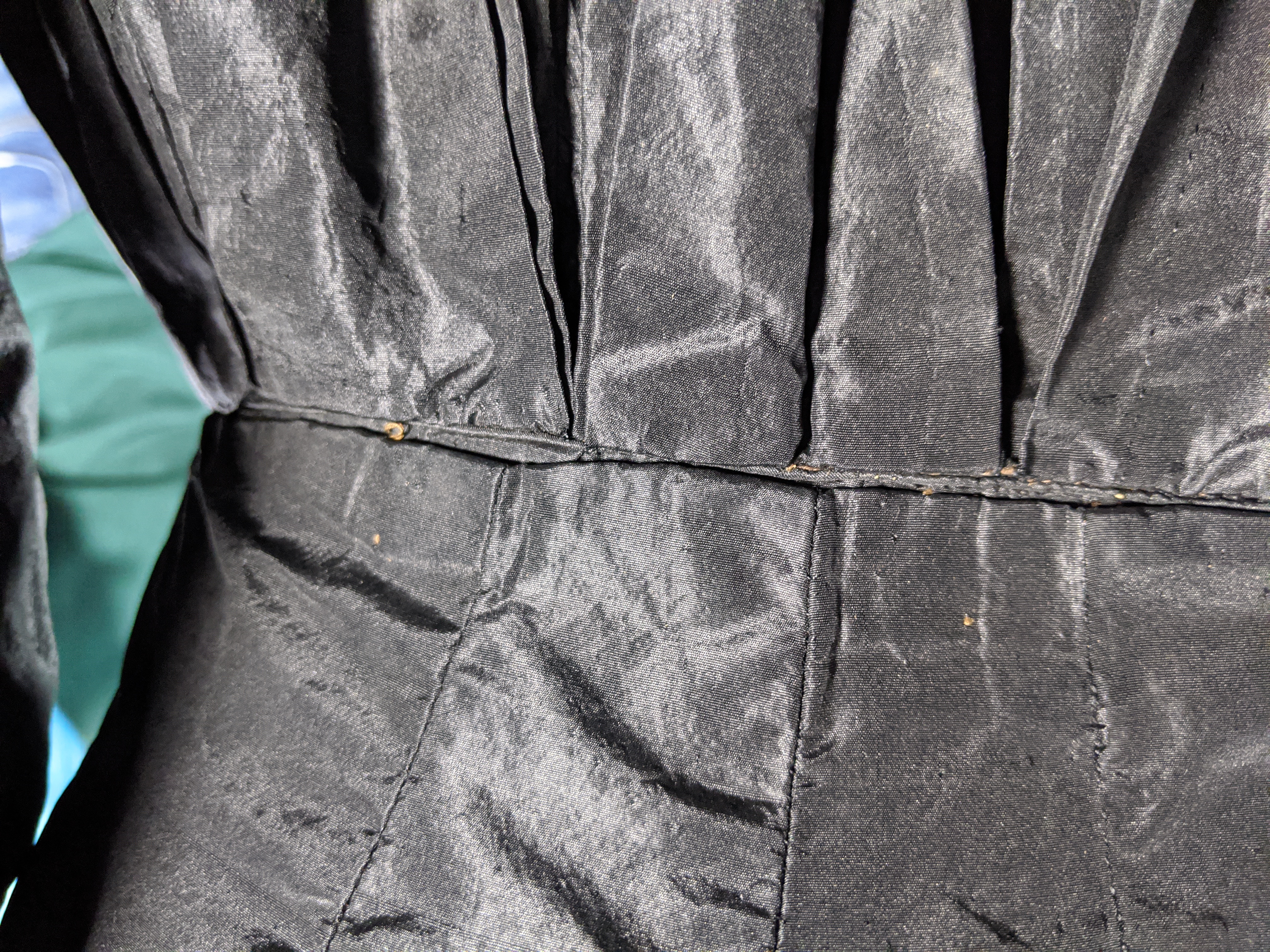
Due to the rising waistline style of the later 1860s, or perhaps because it was a hand-me-down to a shorter lady, the bodice of this dress has been taken up. You can see the uneven fold above the vertical pleats and the tiny piping. Image: Jacksonport State Park Collection
At Jacksonport, another part of our mission as an Arkansas State Park is to offer environmental education and promote stewardship of resources. The women of Civil War-era Jacksonport had many ways to keep their wardrobes looking their best, even in the midst of crisis. Although we don’t have to worry about any gunboats blockading the rivers today, we can still take some “green” inspiration from this old-fashioned attitude of “make do and mend!” Today’s fashion industry is one of the heaviest polluters on the planet, and you can help lessen this environmental impact by learning to mend and alter your own wardrobe instead of just tossing old or damaged clothing and buying replacements.
If you enjoyed this photo essay and want to share ways you’ve used the “Make Do and Mend” spirit, send us an email. Also, we invite you to consider a visit to Jacksonport State Park to see a variety of exhibits on the history of the town, view artifacts from the park’s collection, stroll a river-side trail, and more!

